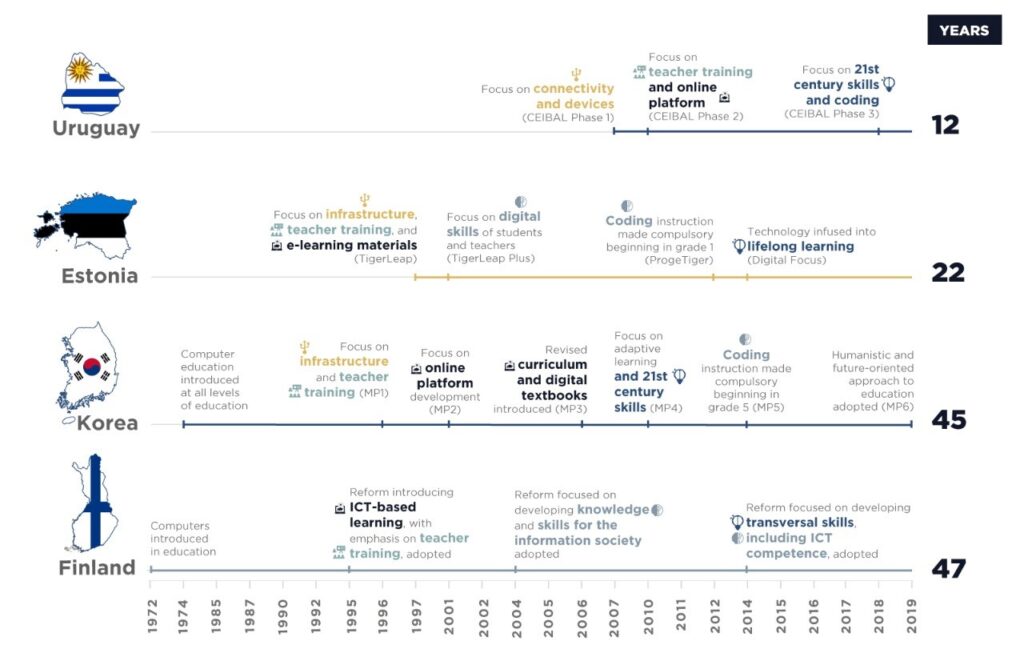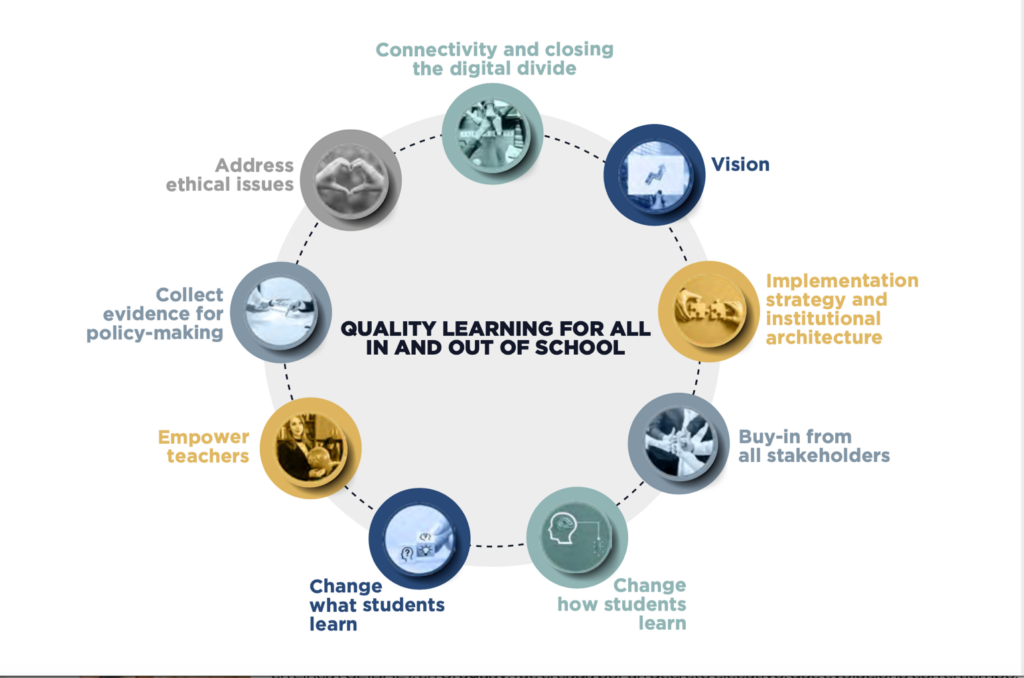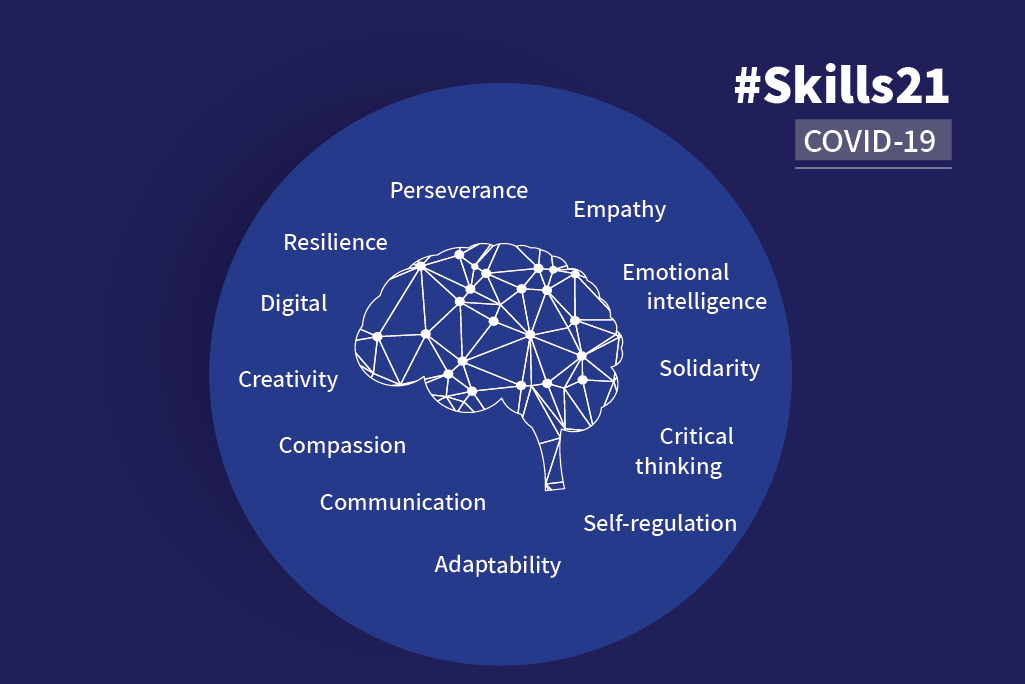Global education and training expenditure is a more than 6 trillion industry. Estimates say that education expenditure will grow to $10T by 2030, making it one of the fastest-growing sectors. Compared to other industries, EdTech represents a very small portion of the global education market: less than 3% is digital spend (HolonIQ), which means there is still a lot of room for growth in the coming years. This also indicates that the sector has a clearly incipient degree of development for the size of the challenges we are facing.
As a consequence of the rapid spread of COVID-19 in the spring of 2020, 192 countries closed their schools, and 91% of children and youngsters were sent home (UNESCO, 2020). From then on, technology ceased to be a mere peripheral instrument in the education sector and became a crucial tool to allow education to happen and continue during the crisis. Suddenly, education became almost entirely dependent on technology. However, the sector was far below the needs in terms of installed capacity and digitization to absorb a shock of these dimensions.
The current challenges in education and training require technology in order to face -at scale and in depth- the transformations that need to take place. This applies both from the point of view of access, as well as the low quality of learning, the need to incorporate new skills such as digital ones, and to continue learning throughout life so as not to be displaced by technology in the labor market.
Many EdTech solutions can be managed and implemented by the teacher. However, given the differences in terms of resources between centers, teachers, and students of diverse socio-economic levels, certain conditions must be met at the system level so that these transformations reach everyone, including the most vulnerable, and prevent existing gaps from being accentuated. Whether digitization contributes to closing gaps in education or opening them even more, will depend on how we use the opportunities that technology offers us.
Educational Transformation: Graduality or Disruption?
The question is, how will this transformation be carried out? Is it possible to think of a gradual process? COVID-19 has accelerated disruption in a world that was already changing. After the challenges and complex experiences with remote learning in most countries, no one can imagine a new normal without technology. The crisis is redefining the future of education. In this context, Ivan Bofarull, CIO of ESADE, points out that the COVID-19 crisis is going to result in a rising EdTech market in the coming years since the problem we are facing brings together all the elements: frequency, density, pain, and friction. As Bofarull states, “In a scenario of a shut-in economy, no matter if you are a high school student or a corporate executive, you will encounter the problem of online learning permanently. You are going to spend massive time and effort trying to get the best experience, and because of the relevance of education, an unsatisfactory experience is going to be perceived as highly painful. This is a major reason to remain optimistic when it comes to EdTech in the near future.”
How can education and training systems respond to this disruption? In October 2018, the Paraguayan Government held an international seminar on technology and learning. International experts shared the processes of the digital transformation of various educational systems, including South Korea, Finland, Estonia, the United States, and Uruguay. All of them presented reform processes sequenced by phases and with different emphases. It took several decades for all of them to take on these reforms. Estonia and Uruguay implemented reforms decades after South Korea and Finland. Still they were quickly catching up to reach the current stage of personalized, skill-based learning. In LAC, the reference case is Uruguay with the Plan Ceibal. They managed to do it in little more than ten years, but also in phases. Each country used different combinations of sequences, and it was evident that these reform processes work mainly on four axes: (i) technological infrastructure with a focus on connectivity; (ii) teacher training; (iii) curricular reform; and (iv) real-time interconnection among schools, teachers, students, and parents.

How does the system inertia break? Although there is no single formula for reform policies at EdTech, there are some points in common between these countries: they all established a clear vision to achieve socio-economic growth; devised an implementation strategy; created a suitable institutional design to support its execution; and took a sequential approach and made substantial investments in technological infrastructure (connectivity and devices) in the first stage of the process.
The New Normal
Can the incorporation of technology be the disruptive element that allows transformation? As Miguel Brechner, creator of Plan Ceibal, states, “nobody asks if a school should have clean water or electricity. In the same way, today, nobody should consider whether or not a school should have access to technology” (Brechner, 2019). In the new normal, greater investment in EdTech can be expected, along with continued work with non-traditional actors (startups and EdTech companies, radio and television networks, etc.) with which the public sector partnered during the crisis to guarantee the continuity of educational services; a greater emphasis on non-traditional skills such as digital, and the consolidation of hybrid and personalized learning models.

Making this change happen requires investment in connectivity; the integration of ICT in teaching and learning practices, empowering and training teachers; making virtual learning become a habit integrated into everyone’s daily routines; and ensuring that the transition between learning inside and outside the school is smooth and feasible so that the equalizing effect of schools, education and training centers and universities continues beyond physical spaces.
When schools reopen, it will be essential to bring students back into the system and tackle learning losses among the most vulnerable. It is necessary to join forces of the entire ecosystem to build a new normal in which all students have access to Education 4.0 (which responds to the needs of the Fourth Industrial Revolution). Because the inequality of outcomes today will directly affect equality of opportunity for the next generation.
EdTech has not been systematically prioritized in Latin America and the Caribbean. But today there is a real opportunity, accelerated by COVID-19, for the industry, teachers, students, investors and governments in the region of growing and transforming how and when we learn so that the outcomes are less and less dependent on the socio-economic environment in which each individual develops.
If you want to know more about which EdTech systems were better prepared to make a quick transition in the midst of the crisis, and how these countries managed to anticipate and adapt to a world in transformation, you can find these and more answers in our most recent publication. We will also soon share in our blog series on education and #skills21 in times of coronavirus the practices implemented by South Korea, Finland, Estonia, the United States, and Uruguay, and how these countries managed to better respond to COVID-19. Stay tuned!
Do you know other countries that have successful practices for incorporating technology in schools? Share them in the comments section or on Twitter via @BIDEducacion #habilidades21 #EnfoqueEducacion .



Leave a Reply